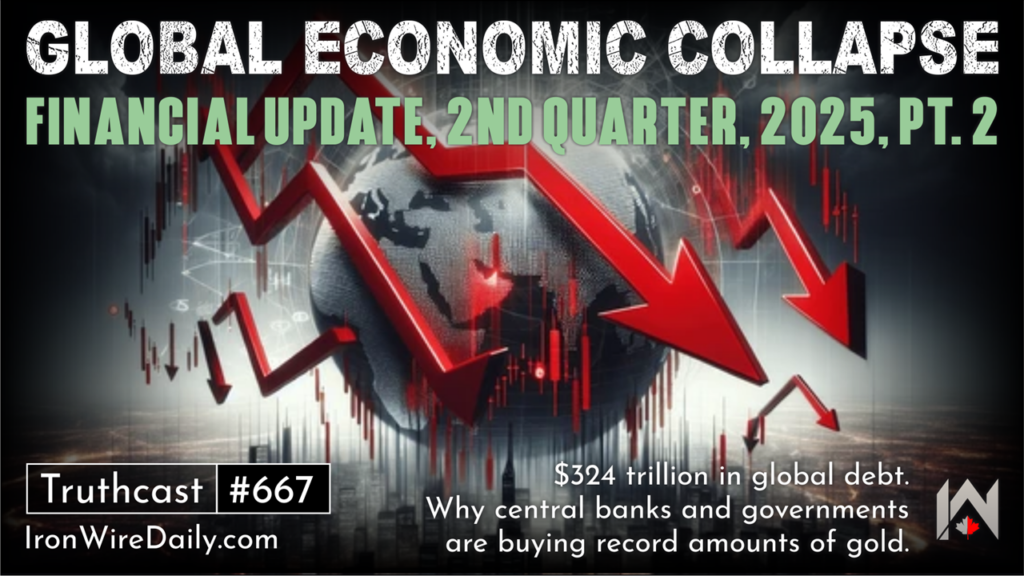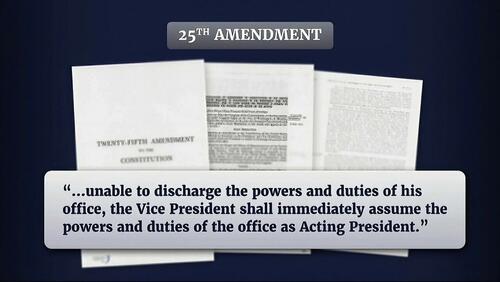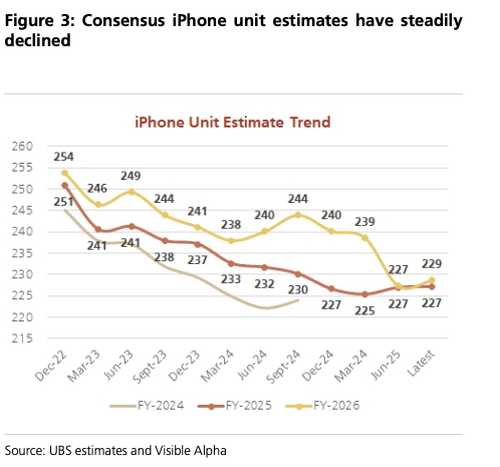The GENIUS Act & Stable Coins – A Repeat Of 1863? Debt Crisis? | Armstrong Economics

The era of stablecoin issuance in the United States and U.S. Senator Bill Hagerty’s GENIUS Act (Guiding and Establishing National Innovation for U.S. Stablecoins) may have the BITCOIN world cheering that this is somehow a validation of Cryptocurrency. The GENIUS Act has been passing with bipartisan support, and people should ask WHY? It is a serious, detailed, and targeted law that understands what stablecoins are and what they offer to the perpetual debt machine, enabling the debt to continue rolling forward in this modern debt-based economy. Many see this as a backdoor for the creation of central bank digital currency and the elimination of paper money, which will enable the government to surveil every transaction for the sake of taxation.
At its very heart, the GENIUS Act establishes that only licensed and supervised entities can issue payment stablecoins in the United States. These are digital assets redeemable for U.S. dollars at par value, intended for payments and settlements. Therein lies the motive. Under this law, only three types of issuers are permitted:
- (1) subsidiaries of insured banks and credit unions,
- (2) specially chartered nonbank firms approved at the federal level, and
- (3) entities regulated by states whose regimes are certified by the U.S. Treasury as substantially similar to federal standards.
On one level, this is the same scheme as COVID. The First Amendment prohibits the government from interfering in free speech – not YouTube, Facebook, or anyone else the government can call to tell them to restrict your speech. Here, the Fed is not issuing the stablecoins; instead, they are issued privately, but backed by US Treasury securities.
Thanks to the Biden Administration that the Neocons ran, they destroyed the world economy by imposing sanctions on Russia for defending Russians in the Donbas that were supposed to have a right to vote on separation under the Minish Agreement that former Chancellor Merkel of Germany later admitted they were buying time for Ukraine to build a NATO trained army to start World War III with Russia.
The Neocons removed Russia from Swift, coming to the aid of the Donbas, after Victoria Nuland installed an unelected government in Ukraine and instructed them to start the civil war and kill all the Russians in the Donbas.
So what does this have to do with the GENIUS ACT? Imposing the sanction on Russia created BRICS, which then threatened to do the same to China if they helped defend Russia. More and more countries realized that they were being dictated to by the Neocons running the Biden Administration. China had held 10% of US debt and began dumping. They would have to be really stupid to hold any US debt when the Neocons only want war and do not consider what they are doing to the world economy.
The GENIUS ACT = Stablecoins and private organizations will issue them and must back them with US Treasuries, as the Neocons, in their quest for World War III, are destroying the global debt markets. The GENIUS ACT aims to replace China et al., who used to buy US debt, all because these Neocons want World War III.
Funny How History Repeats!
The very same concept of how to sell US debt was the solution in 1863. U.S.-issued National Bank Notes began issuing in 1863 as part of the National Banking Act. Banks could issue currency against their purchases of US debt to fund the Civil War. These National Bank Notes were backed by government bonds. Here’s why and how it worked:
-
To Finance the Civil War
-
The U.S. government needed a stable way to fund the Union’s war efforts. By requiring banks to purchase government bonds to back their currency, the Treasury raised money for the war.
-
-
To Create a Uniform National Currency
-
Before 1863, banks issued their own notes (state banknotes), leading to widespread counterfeiting and instability.
-
The National Banking Acts (1863 & 1864) aimed to replace these with standardized National Bank Notes issued by federally chartered banks.
-
-
To Strengthen Government Credit
-
By tying banknote issuance to U.S. bonds, the government ensured demand for its debt, stabilizing its finances.
-
Rob Nelson, co-founder of the Bitcoin Policy Institute, argued that Bitcoin’s distinct position was as a valuable store and, increasingly, a functional currency for several countries. He raised a compelling argument that sucked in a lot of people:
“We have a true store of value and for many countries, it’s becoming a currency, a usable currency. We have something different, we have something special.”
As I have said, BITCOIN is no more a store of wealth than the dollar, euro, gold, or silver. Everything has a cycle, and everything rises in price and then falls. It does not matter what century we look at, if you do not understand that all tangible assets are on one side of the scale and whatever money is has always been on the opposite side.
 When gold is money, it falls in purchasing power just like paper dollars during waves of inflation. Even under a gold standard, there were periods of inflation and deflation. Read the history of the California Gold Rush. During the 1849 Gold Rush in California, the journalist for the New York Tribune, Bayard Taylor (1825-1878), arrived in San Francisco by ship during the summer of 1849. He was shocked at what he encountered and did not think that anyone would even believe what he was going to write. His dispatches about the gold rush economy in California stunned many and helped to create the 1849 Gold Rush.
When gold is money, it falls in purchasing power just like paper dollars during waves of inflation. Even under a gold standard, there were periods of inflation and deflation. Read the history of the California Gold Rush. During the 1849 Gold Rush in California, the journalist for the New York Tribune, Bayard Taylor (1825-1878), arrived in San Francisco by ship during the summer of 1849. He was shocked at what he encountered and did not think that anyone would even believe what he was going to write. His dispatches about the gold rush economy in California stunned many and helped to create the 1849 Gold Rush.
The average wage for a laborer in New York was about one or two dollars a day. In California, individual hotel rooms were rented to professional gamblers for upwards of $10,000 a month, which is the equivalent of about $300,000 today. The degree of inflation in terms of gold was astounding and lacks comparison in modern times. There was so much gold that the value of goods rose even though they did not in New York. The inflation phenomenon was local – akin to the Tulip Bubble.
Gold became so common; they were even striking $50 gold coins in California when $20 was the highest denomination elsewhere and $1-dollar coins down to 25 cents all in gold. Eventually, there were $1 gold coins minted in the United States for general circulation throughout the USA. Indeed, Taylor wrote:
“[One] citizen of San Francisco died insolvent to the amount of forty-one thousand dollars the previous autumn. His administrators were delayed in settling his affairs and his real estate advanced so rapidly in value meantime that after his debts were paid, his heirs had a yearly income of $40,000 [$1.2 million today].
“These facts were indubitably attested; everyone believed them, yet hearing them talked of daily, as matters of course, one at first could not help feeling as if he had been eating ‘of the insane root.’”
It does NOT matter what is money. It will always rise and fall as measured against tangible assets as it has done since Babylonian times. In fact, the very first attempt to control inflation, as the central banks are doing right now, was the wage and price controls put in place by the legal codes of the Assyrians and Babylonians. The first money was no different than paper dollars – it was representative.
The coinage of the dominant economy was always the international medium of exchange. Ancient Egypt never issued coins. They imitated Athenian Owls in order to participate in international trade. The Athenian Owls were like the dollar today – the effective reserve currency.
The US had two silver dollars of different weights, which facilitated trade with China, as China had a different silver standard than the West.
Roman coins have been discovered even in Japan. Trade with India for spices was extensive in the ancient world. Here is an imitation of a Roman gold aureus issued in India, and note that the weight was even heavier than the official Roman standard.
The notion that simply because coins were made of gold or silver meant they were a store of wealth is laughable when you understand monetary history. The Bronze Age was based on the intrinsic value of bronze for its utility value, where it could be fashioned into a sword or a plow. The first ingots of the Minoans were shaped as sheppskil, for they were relaying that they too were at first representative of the previous medium of exchange. When precious metal became a medium of exchange, silver was more valuable than gold (I will do a report on that).
When the Persians captured Valerian I (253-260AD) and Rome could not rescue him, the confidence in the Empire began to collapse. Banks were even suddenly skeptical about accepting Roman coins. Would they still be worth anything, considering they were valued above their actual metal content?
A document from Egypt has survived illustrating the financial crisis that was unleashed. It is from Aurelius Ptolemaeus who is the strategus of the Oxyrhynchitenome. The public officials gathered and accused the bankers of closing their doors on account of their unwillingness to accept the divine coins of the Emperors. It became necessary that an order had to be issued to all the owners of the banks directing them to open and accept and exchange all coins except the absolutely spurious and counterfeit. It was also directed that all who engaged in business transactions who refused to comply would be penalized. (POxy 1411 260AD, cited by Burnett 1987: p104)
In China, money was cowrie shells. In Africa, money was cattle, which was even the case at first in other parts of the West. The first emergence of silver was typically in the form of wire, and even the Bible discusses weighing silver to pay for a transaction.






























